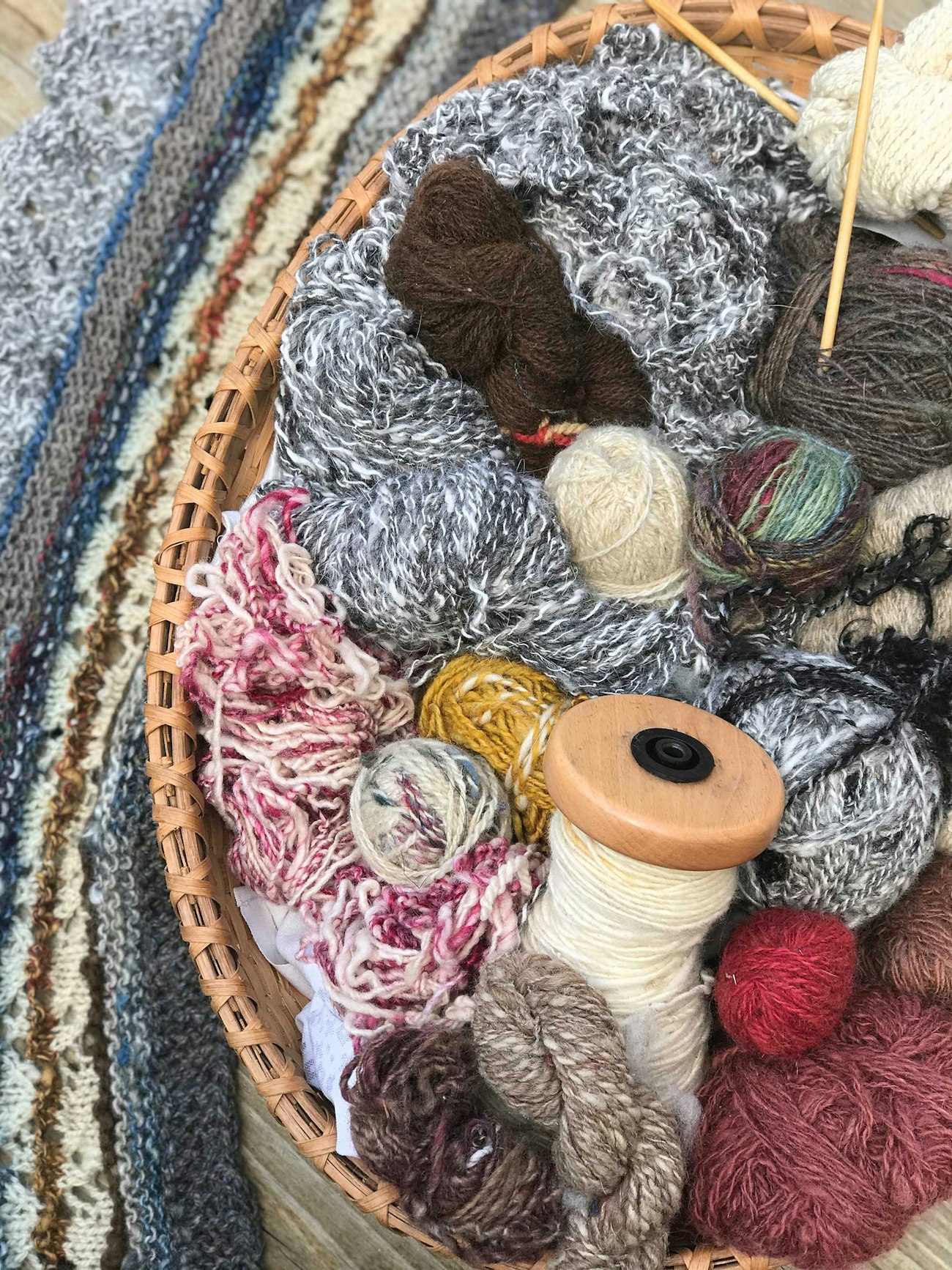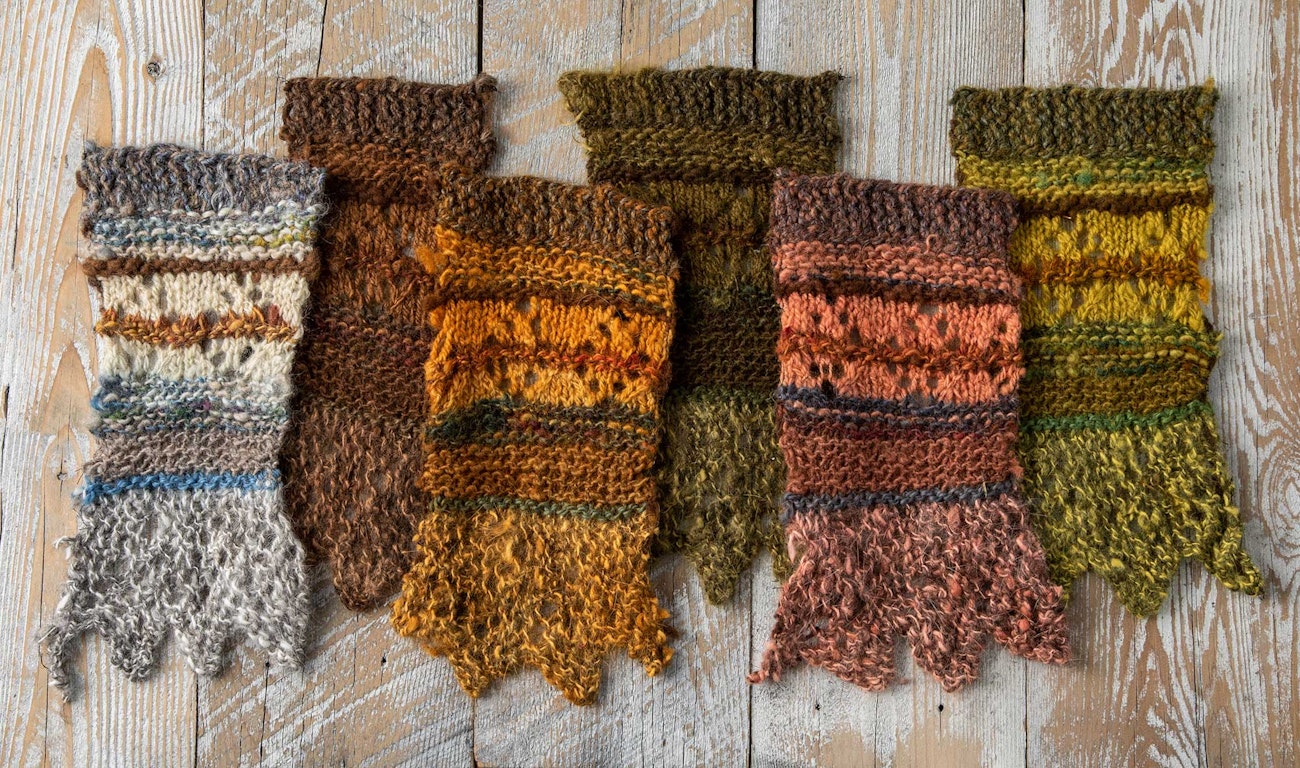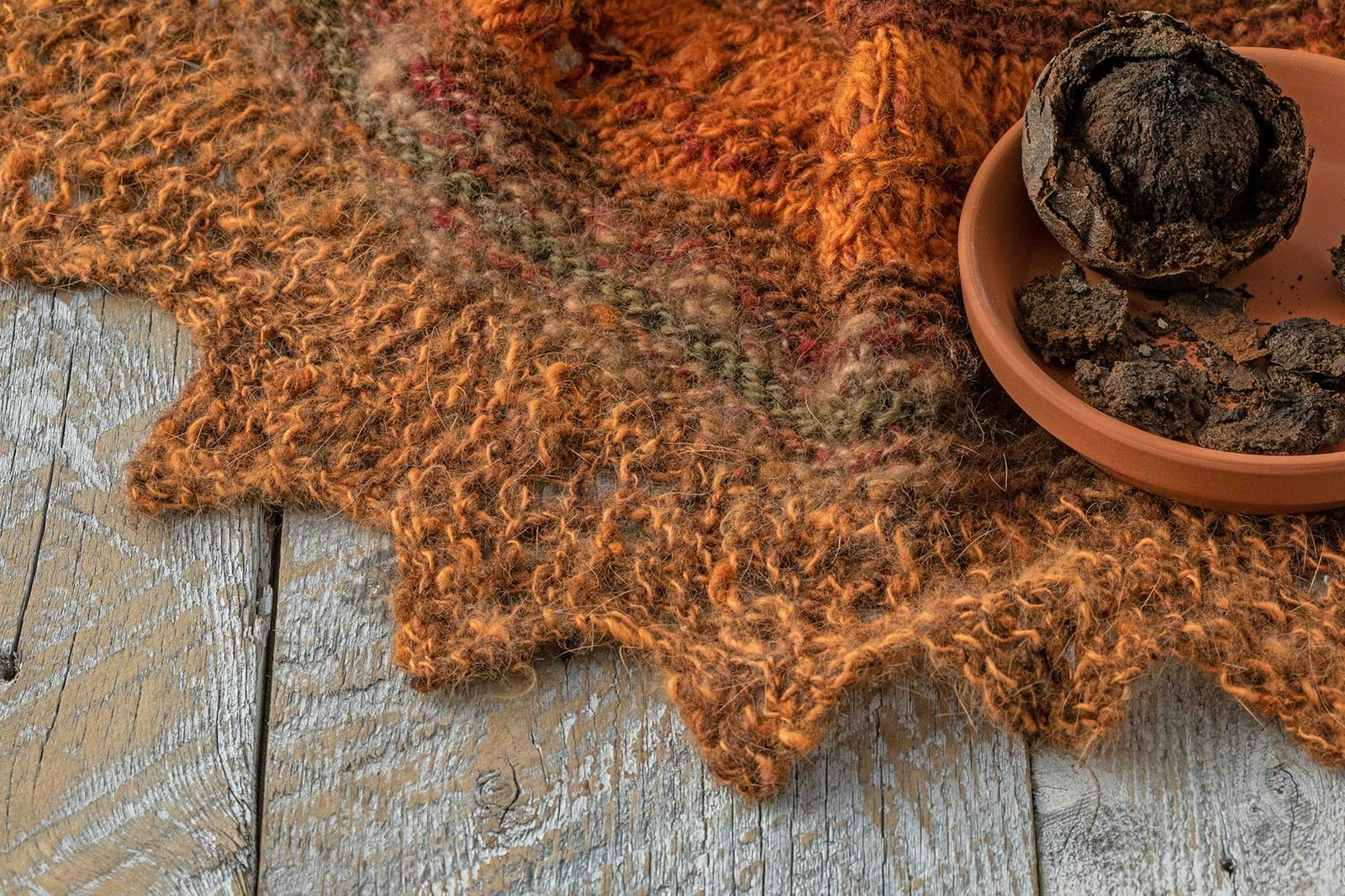Subscriber Exclusive
Piece Dyeing: It’s Never Over
Looking for a great way to use up oddball skeins? See how one spinner knitted a shawl from bits of handspun, then overdyed it for a cohesive look!
Looking for a great way to use up oddball skeins? See how one spinner knitted a shawl from bits of handspun, then overdyed it for a cohesive look! <a href="https://spinoffmagazine.com/piece-dyeing-its-never-over/">Continue reading.</a>
https://spinoffmagazine.com/cdn-cgi/image/format=auto/https://www.datocms-assets.com/75073/1751585957-owen-dyed-shawl.jpg?auto=format&w=900
This story starts like an old one, a story of handspun garment design and rejuvenation that begins, “Joseph had a little overcoat. It was old and worn. So, he made a jacket out of it and went to the fair.” Through the story, Joseph’s jacket is remade again and again. He should have tried dyeing!
Piece dyeing is a way to refresh a garment, unify a textile created with many odd bits of yarn, or alter a palette of many shades in a previous over-dye experiment. It is also a way to recover from an “oops!” color combination.
Can this be the same shawl? Click on the images below to get a closer look at Martha's shawl before and after piece dyeing.
Samples are a nice thing in a well-planned life, but, of course, sampling doesn’t always happen. There is an enthusiasm that moves us from the wheel to the loom or needles! Piece dyeing offers us a way forward that does not involve starting over; it can create a fresh look by adding a uniting color to the entire textile. Close your eyes and imagine dyeing a multicolored sweater:
What will happen if I put the whole thing in a blue dyepot? What about yellow or walnut brown? Will the colors mix or layer?
Creating a Set of Swatches
I searched my baskets of handspun yarns with “no known destiny” and chose bottom-of-the-barrel combinations that were not so satisfying at the start. I chose those that were about the same gauge. These were forgotten odd bits of handspun, gifts of departed spinsters, and leftovers from long-ago
SUBSCRIBER EXCLUSIVE
This story starts like an old one, a story of handspun garment design and rejuvenation that begins, “Joseph had a little overcoat. It was old and worn. So, he made a jacket out of it and went to the fair.” Through the story, Joseph’s jacket is remade again and again. He should have tried dyeing!
Piece dyeing is a way to refresh a garment, unify a textile created with many odd bits of yarn, or alter a palette of many shades in a previous over-dye experiment. It is also a way to recover from an “oops!” color combination.
Can this be the same shawl? Click on the images below to get a closer look at Martha's shawl before and after piece dyeing.
Samples are a nice thing in a well-planned life, but, of course, sampling doesn’t always happen. There is an enthusiasm that moves us from the wheel to the loom or needles! Piece dyeing offers us a way forward that does not involve starting over; it can create a fresh look by adding a uniting color to the entire textile. Close your eyes and imagine dyeing a multicolored sweater:
What will happen if I put the whole thing in a blue dyepot? What about yellow or walnut brown? Will the colors mix or layer?
Creating a Set of Swatches
I searched my baskets of handspun yarns with “no known destiny” and chose bottom-of-the-barrel combinations that were not so satisfying at the start. I chose those that were about the same gauge. These were forgotten odd bits of handspun, gifts of departed spinsters, and leftovers from long-ago[PAYWALL] projects.
 A basketful of Martha’s handspun gleanings. Photo by Martha Owen
A basketful of Martha’s handspun gleanings. Photo by Martha Owen
I started with colors of yarn that did not represent the thing I planned to make and wear. Like pieces from a potter who paints glaze designs that look very different when fresh from a hot kiln, my shawl—while on the needles—was shades and speckles of this and that.
I have done enough messing around and natural dyeing to know what to expect—kind of! As a starting place, I look at notes and books and follow recipe guides for pure-color pots. Most of the time, a perfectly delicious colorful textile results from my efforts. So then I go swinging down the road singing! The only true promise from garden and nature dyeing is this:
Sometimes odd and curious effects occur.
For the color-test samples, I made one big, long swatch instead of six small swatches. Effects occur in a long row of knitting that do not happen in small, short rows. The colors are stretched out and more blended at the start. My big idea was to combine my odd balls in a sample shawl, mark and sew sections, and then cut the shawl into pieces. I ended up with six swatches (almost the same size). This test would allow me to see the same textile with six different natural dye methods.
 Piece-dyed samples, shown left to right: Natural (before piece dyeing), walnut, weld plus marigolds, weld and marigold with iron, madder, and lichen.
Piece-dyed samples, shown left to right: Natural (before piece dyeing), walnut, weld plus marigolds, weld and marigold with iron, madder, and lichen.
Read the rest of the story. Subscribers can access a PDF of the full article, “Piece Dyeing: It’s Never Over,” in the Spin Off Library.
More Resources:
Martha Owen is a resident artist in spinning, knitting, feltmaking, dyeing, and surface design at the John C. Campbell Folk School (folkschool.org) in Brasstown, North Carolina. Her adventure in spinning and natural dyeing began at this very school in 1978. Since 1980, her extended family has included sheep, Angora rabbits, Great Pyrenees, and border collies. Also a banjo player and known to tell a story or two,
Martha’s interests in sheep, wool, music, and dance have carried her literally and joyfully around the world. Her children say she is a wool nerd, but her sheep say she is outstanding in her field! Find her on social media @marthaowenwoolens.




 A basketful of Martha’s handspun gleanings. Photo by Martha Owen
A basketful of Martha’s handspun gleanings. Photo by Martha Owen  Piece-dyed samples, shown left to right: Natural (before piece dyeing), walnut, weld plus marigolds, weld and marigold with iron, madder, and lichen.
Piece-dyed samples, shown left to right: Natural (before piece dyeing), walnut, weld plus marigolds, weld and marigold with iron, madder, and lichen.